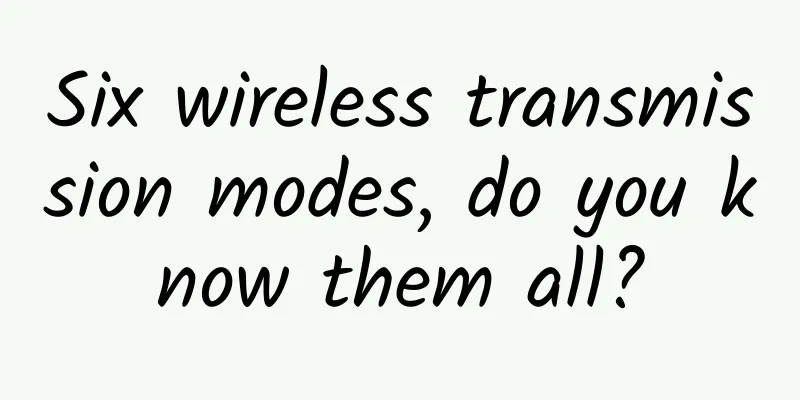Local area communication technology is moving towards wide area communication technology, accelerating the arrival of the era of whole-house intelligence

|
Smart home has a long history. In the early days, it was mainly based on wired technology, which was complicated and costly to wire, limiting the popularity of smart home. However, thanks to the rapid development of communication technology and computer technology, smart home has begun to shift from wired to wireless, greatly reducing the cost of use for users and beginning to enter the homes of ordinary people. Smart home mainly includes two forms: smart single products and smart scenes. Wireless communication technology helps users to remotely control a single smart hardware through embedded module protocols and other methods; and after superimposing new generation computer technologies such as AI and edge computing, users' use of smart home can shift from single product control to scene linkage and digital control, promoting the realization of whole-house intelligence. 1. Local area communication technology has matured and is currently the mainstream application technology for smart homesShort-range wireless communication technology has the advantages of scalability, mobility, and portability, which has greatly promoted the development of smart home applications. At present, the mainstream wireless communication application technologies in the smart home field include Wi-Fi, Zigbee and Bluetooth, and these three technologies have their own characteristics, so there are certain differences in the smart home products and scenarios they are applicable to. 1.1 Wi-FiWi-Fi has the characteristics of wide user coverage, fast transmission rate and low product cost. It is currently the most widely used wireless communication technology in my country. It is precisely because of the high penetration rate of Wi-Fi that Wi-Fi-based smart home products are the most common, which has greatly promoted the development of smart homes. Users can directly connect to the Internet after purchasing smart home products and equipment, and remotely control smart devices through mobile phones and other terminals. The operation is simple, allowing people to enjoy a convenient smart life. Based on the characteristics of Wi-Fi, it is suitable for scenarios with high data throughput and low latency in smart homes, and is mainly used for content distribution and command control. Specific application products include audio and video equipment and smart home appliances, such as video surveillance, smart speakers, smart TVs, smart air conditioners, smart purification/humidification equipment, etc. But Wi-Fi also has disadvantages. Its biggest problem is its poor stability and high power consumption, which limits its application in smart home products, such as some switch products and sensor products. 1.2 ZigbeeZigbee is a relatively popular two-way short-range wireless communication technology in the smart home industry. It connects and controls smart home products through Zigbee gateways or repeaters. It has the characteristics of high security, low power consumption, strong networking capability, large capacity, and long battery life, and is deeply loved by some smart home manufacturers. On the one hand, Zigbee technology uses a honeycomb structure to network, allowing devices to communicate with the gateway in multiple directions, greatly improving stability. At the same time, this networking method can accommodate a large number of nodes and can meet the coverage requirements of a larger range, such as smart communities and smart buildings. On the other hand, the two-way communication capability alleviates the safety risks of security equipment and other products when they are used, such as it can prompt users whether the door has been closed. Zigbee technology is mainly suitable for smart home scenarios with extremely small data volume, low power consumption and high stability requirements, and is mainly used to send commands. Specific application products mainly include switch products and sensor products, such as smart switches, smart sockets, human body sensors, smart temperature/humidity sensors, etc. However, Zigbee technology also has disadvantages such as high cost, short communication distance, and non-open source protocol. Therefore, for smart home products that are more cost-sensitive and require broad compatibility, there are still certain obstacles in its popularization in households and product interconnection. 1.3 BluetoothBluetooth is a point-to-point, short-range communication technology with the characteristics of low power consumption, low cost, high compatibility and reliability. It has now developed to Bluetooth 5.1. Bluetooth 5.1 adopts a mesh self-organizing network structure and optimizes the underlying Internet of Things, further improving the effective working distance between the transmitting and receiving devices, which is conducive to smart home devices to achieve higher performance and reduce energy consumption. Bluetooth technology is mainly responsible for transmitting and maintaining connections or sending commands in smart home applications. It is suitable for scenarios with low data throughput and low power consumption. The main application products currently include wearable/health monitoring devices such as smart watches, smart bracelets, headphones, health monitoring, as well as smart home appliances such as smart LED lights and smart toilets. However, Bluetooth technology also has disadvantages such as few network nodes and unsuitability for multi-point control, so it is not suitable for building a large home network. 1.4 Summary of Local Area Communication TechnologyRelying on its own advantages, local area communication technology has opened the door to the development of smart homes. Wi-Fi, Zigbee and Bluetooth technologies have obvious complementary effects in performance and are expected to coexist for a period of time. The advantages and disadvantages of the three technologies are compared in Table 1-1. Table 1-1 Comparison of short-range local area communication technologies Source: Huaxin Compilation But whether it is Wi-Fi technology, Zigbee or Bluetooth, they are not prepared for smart homes. Their pain points such as short transmission distance, signal blind spots, and difficulty in connecting smart home appliances to the Internet will limit the further development of smart homes to a certain extent. 2. Wide-area communication technology is gradually being explored and applied, which will enable smart homes to reach a new levelBenefiting from local area communication technology, my country's smart home industry has taken off rapidly, and a number of smart products such as smart cameras and smart switches have begun to grow explosively, pushing people to take the first step towards smart life. The development of wide area communication technology and its application in smart homes will further make up for the shortcomings of local area communication technology, promote the implementation of more smart home products and the realization of whole-house intelligence. 2.1 5GAt present, the "island phenomenon" still exists in the field of smart home, and the interconnection of information data between various smart products has not been fully opened, causing users to feel "fragmented" during use. The emergence of 5G technology can effectively alleviate this phenomenon. The characteristics of 5G wide connection can provide a relatively unified home network standard for smart devices in different scenarios such as kitchens, bedrooms, and living rooms, so that various products can be effectively linked. At the same time, users will be more convenient and flexible in using smart home products. In addition, the characteristics of 5G high speed and low latency will upgrade the current smart home experience and drive the development of new applications, such as ensuring high-quality voice and video calls and promoting the implementation of ultra-high-definition video and other products. 5G can not only carry a large number of devices, but also meet the needs of stable and fast data transmission between products in smart homes. It is suitable for scenarios with large data throughput and ultra-low latency. In the future, new applications can be opened up in smart home fields such as ultra-high-definition video, VR/AR video, smart refrigerators, and smart robots. 2.2 NB-IoTNB-IoT has shown great advantages in the application of smart home. First, it has ultra-low power consumption, and the battery life is about 10 years, which can effectively reduce the subsequent maintenance costs and ensure the continuous use of the product; second, it has strong coverage, which can cover indoors and basements, and the signal is stable, which is undoubtedly a great benefit for products in smart home that require high network connection; third, it has massive connections, which can meet the simultaneous connection of multiple smart home terminals, which is conducive to building an interconnected smart home network. Based on the characteristics of NB-IoT, it is suitable for scenarios such as extremely low power consumption and remote emergency response. Its main smart home application products include smoke sensors, smart locks, and children's anti-loss watches. 2.3 Summary of Wide Area Communication Technology5G and NB-IOT are wide-area communication technologies led by operators. Their advantages are exactly what local-area communication technologies lack, and they will enable differentiated smart home scenarios. By applying these two technologies in the field of smart homes, people and devices, as well as devices and devices, will achieve a deeper level of connection, promoting the implementation and popularization of whole-home intelligence. 3. ConclusionThe foundation of smart home is the interconnection of smart devices, and wireless communication technology is the channel to achieve device connection and information transmission. Local area communication technology has driven the development of smart home and created the era of smart single products; in the future, as more and more homes become smart, more efficient wireless technology will be needed to support it. The characteristics of 5G and NB-IoT just meet this demand, which will further promote the integration of people, homes and smart devices and accelerate the arrival of the era of whole-house intelligence. |
<<: 5G will accelerate the development of smart grids by filling three major shortcomings
>>: The three major operators delisted from the US and returned to the A-share market
Recommend
Why are there constant news about the merger between China Telecom and China Unicom? The reason is related to this matter
China Mobile is too powerful. Do China Unicom and...
IP address conversion: conversion between numbers and strings
There are generally two formats for storing IP ad...
SD-WAN in 2019: A conundrum for service providers
It’s that time of year again when analysts and ex...
Let’s not talk about technology, but business scenarios: Huawei’s fully cloud-based network enables digital transformation
[Original article from 51CTO.com] At the recently...
Under the Dome: Green Thoughts on Data Centers
The night of *** in February 2015 was destined to...
RackNerd: $9.49/year KVM-768MB/12GB/2TB/San Jose and other data centers
RackNerd released a March promotion plan, includi...
Minsheng Technology advocates the concept of the BioFaaS era and releases four series of products
[[248983]] 【Born extraordinary, intelligent and f...
Shaanxi Kunpeng Ecological Innovation Center actively explores talent training, and two Kunpeng training activities have been successfully concluded
[51CTO.com original article] On November 28, 2020...
The explosion of the Internet of Things has forced the advancement of edge computing
According to research firm IDC, spending on the I...
The important thing in wireless in 2020 may not be 5G
With all the hype and anticipation surrounding 5G...
Remote holographic presentation is the development direction in the 5G era, and AR/VR hardware has entered a period of quantitative change
"Holographic telepresence is expected to bec...
Once together, now separated, 5G baseband will connect everything
2019 is the first year of 5G, but SoC and 5G base...
A certificate chain processed, but terminated in a root certificate that is not trusted by the trust provider
Today, I encountered this problem when installing...
Created a debuggable gRPC GUI client
[[437208]] This article is reprinted from the WeC...
An article to help you understand the concept of TCP/IP
1. What is TCP/IP? Transmission Control Protocol/...









